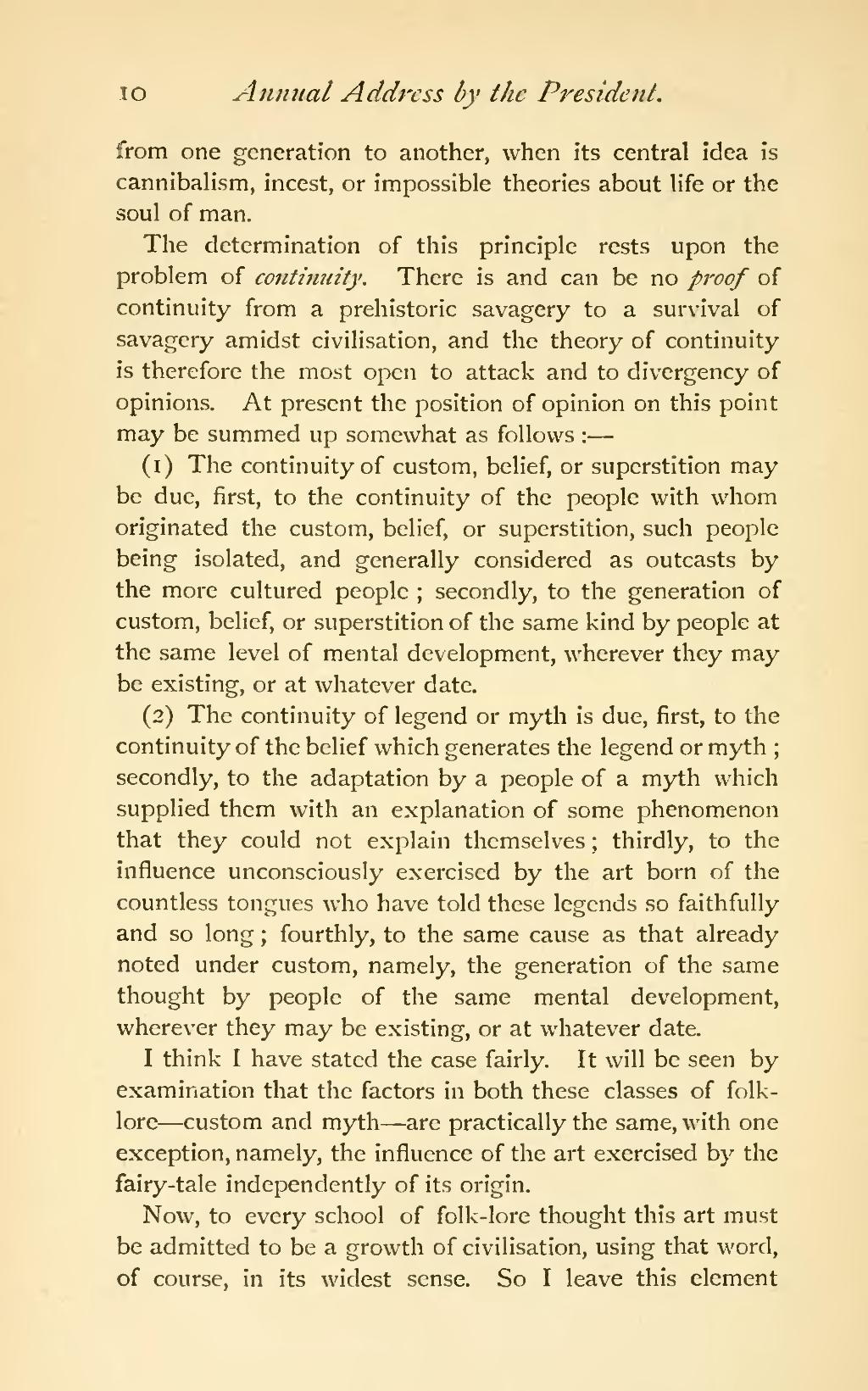from one generation to another, when its central idea is cannibalism, incest, or impossible theories about life or the soul of man.
The determination of this principle rests upon the problem of continuity. There is and can be no proof of continuity from a prehistoric savagery to a survival of savagery amidst civilisation, and the theory of continuity is therefore the most open to attack and to divergency of opinions. At present the position of opinion on this point may be summed up somewhat as follows:—
(1) The continuity of custom, belief, or superstition may be due, first, to the continuity of the people with whom originated the custom, belief, or superstition, such people being isolated, and generally considered as outcasts by the more cultured people; secondly, to the generation of custom, belief, or superstition of the same kind by people at the same level of mental development, wherever they may be existing, or at whatever date.
(2) The continuity of legend or myth is due, first, to the continuity of the belief which generates the legend or myth; secondly, to the adaptation by a people of a myth which supplied them with an explanation of some phenomenon that they could not explain themselves; thirdly, to the influence unconsciously exercised by the art born of the countless tongues who have told these legends so faithfully and so long; fourthly, to the same cause as that already noted under custom, namely, the generation of the same thought by people of the same mental development, wherever they may be existing, or at whatever date.
I think I have stated the case fairly. It will be seen by examination that the factors in both these classes of folklore—custom and myth—are practically the same, with one exception, namely, the influence of the art exercised by the fairy-tale independently of its origin.
Now, to every school of folk-lore thought this art must be admitted to be a growth of civilisation, using that word, of course, in its widest sense. So I leave this element
